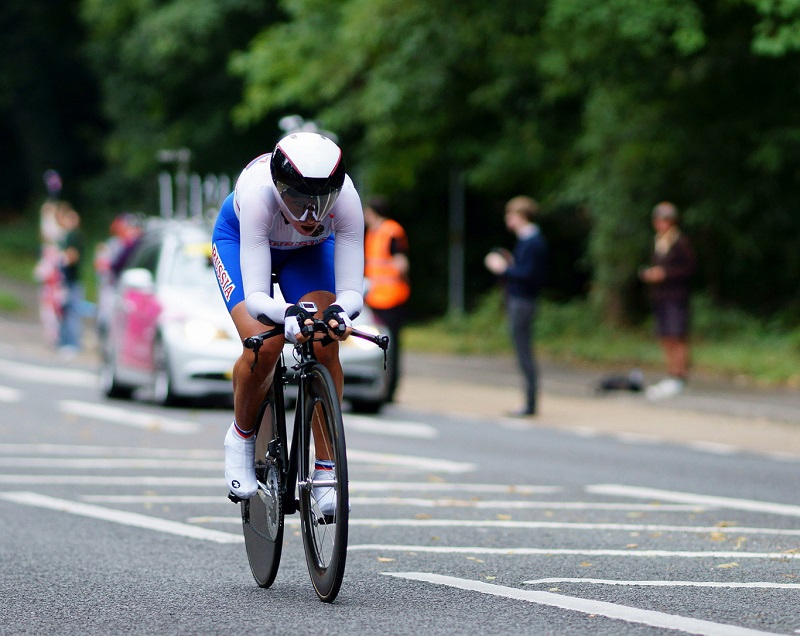Within a few days they will begin the expected Olympic Games Rio 2016, one of the most controversial generated as has been approaching the start date;the state, not as good as expected, the Olympic Village, the Zika virus or possible expulsion of Russian athletes due to cases of massive doping, are some of the news that has accompanied us during these previous days to the ceremony opening.
Our athletes are already en route from Rio de Janeiro, a city that hosts the Games this year, where after months preparing mentally will be measured with the best athletes from around the world. A burst of adrenaline and energy that will lead them to give the best of themselves: what do they eat to cope with this time of great tension and emotion?
Tell me what sport you practice and tell you how much you have to eat
And, obviously, it does not have the same physical wear a marathon an athlete archery. We could divide sports into different groups to learn about how many calories you need each of the athletes, but this will always depend, in addition to your sport, other factors: age, sex, height, weight, muscle mass, fat mass …
Dr. Nanna Meyer, a nutritionist at the Olympic Committee and professor of nutrition at the University of Colorado, made an estimate of the calories needed for each type of athlete ahead of the Olympic Games in London. The results are surprising because many Olympians do not eat many more calories than you can take a clerk in his day.

Various sports and the number of calories
First of classification Nanna Meyer speaks of the sports endurance or resistance, such as cycling or swimming. Athletes who belong to these disciplines need a good load of glycogen prior to competition to withstand a sustained effort over time, as may be the case also marathoners. In this case, the day prior to competition an athlete can consume 3,000 to 8,000 calories.
In a second range, Meyer puts the athletes who play team sports such as football or basketball. In this case athletes should maintain a high carbohydrate intake during the days before the competition, although a load of glycogen is not necessary “per se”. It is estimated that its pre-competition diet should contain about 3,000 or 4,500 calories , twice recommended for the normal population (the recommended dietary allowance of a man are about 1,800-2,000 calories, while for women we move in ranges of 1,500-1,800).
The third group Meyer calls it “other sports” such as sailing or kayaking. They are sports that require moderate effort: not as strong as endurance athletes, but more demanding than other disciplines. Their pre-competition diet is based on a high intake of carbohydrates and about 2,500 to 3,500 calories.
The fourth group is made up of athletes who are engaged in strength sports or power , as weightlifters or putters. Also in this case we would be before a pre-competition diet high in carbohydrates, in this case about 2800-6000 calories. We cannot forget that these athletes have a tremendous amount of muscle mass you need “fuel” to function and move.
Another group consists of what Meyer calls “aesthetic sports” such as artistic gymnastics, rhythmic and synchronized swimming. In this case your intake no pre-competition focuses both on high carbohydrate intake, but having to make certain restrictions to accommodate the “canons” that requires each discipline. Your diet days before competing is estimated at 2,000 or 2,500 calories a day.
In a final category Meyer refers to sports in which different groups of competition are based on the weight of each athlete, such as boxing. In this case it is necessary to measure the millimeter diet of each athlete to make into a particular category: the days before weighing usually have a more restrictive diet this purpose, about 1,200 to 1,500 calories, while once they have They classified their energy intake to recover and prepare for the competition is increased.
What equate all those calories?
All Olympic teams always travel with a team of sports nutritionists carefully designed each of the intakes of athletes and help them maintain a diet that will help them achieve their goals. They also take into account the personal preferences of each athlete, because at this point it is not uncommon to find vegetarian or vegan athletes (Carl Lewis, “the son of the wind”, she followed a vegan diet while competing).
Most important in the diet of athletes is that the calories they consume come from food quality : not only is the number of calories consumed, but also of the origin of the same. Thus, dishes abound in fresh foods like fruits and vegetables, carbohydrates such as pasta or grains and quality proteins from lean meat, fish and vegetables.
This contrasts with some curious facts, such as the presence of a McDonald’s restaurant, which is not exactly the cradle of healthy food in the Olympic Village previous 2012 Summer Olympics and 2008 Beijing Indeed, menus McDonald’s were free for athletes in London. Rio de Janeiro this year will not be less and also feature a restaurant chain in the Olympic village, although it has been alerted to certain athletes to stay away from their burgers.
If you were in the Olympic Village and had the chance to eat free at McDonald’s every day, how many menus should eat to bring the diet of an Olympic athlete? A menu of MacDonald’s with a Big Mac, one of its flagship hamburger, medium potatoes Coca-Cola and medium (which is also worldwide sponsor of these Games) contains approximately 1058 calories.
You may also like to read another article on BlogsMujer: Exercising does not counteract the effects of spending much time sitting: learn to solve
Athletes who are out of the norm
Clearly, a high – level athlete as are all who come summoned to the Olympics, knows that much of his success as an athlete lies in taking adequate to their needs food : rarely see visiting them fast food restaurants, and much less in a competition stage. Food is an important part of sports performance, and lovingly cares for each of the delegations.
But we always found some athletes who prefer to keep a regime “their way”“. Not only that, but also win medals, but we should ask how much truth and how much of marketing is in such statements. Jamaica’s Usain Bolt after winning three gold medals at the 2008 Summer Olympics said in his biography Faster than lightning that had not felt comfortable with the local food and had chosen fed on chicken nuggets and yams (a tuber that grows in south Asia).
A recurring example when it comes to extreme diets in athletes is US swimmer Michael Phelps, whom the media have attributed to consume the not inconsiderable figure of 12,000 calories a day. This has already been denied by Phelps himself, however, admits not count your calories and eat garbage like jellybeans supports or cupcakes food.
Years of training for a few minutes of glory
And in all sports the same is true: the key is always in training . In the months and years that have passed preparing athletes to reach what is considered one of the greatest honors that an athlete can aspire: to represent their country in the Olympics.
As a test, for example, of an opposition, we played the work of one or more years of study, in a few Olympic athletes show that for so long have trained minutes. And within that “training” also encompasses food.
More important than what they eat day that they are in the Brazilian capital is that diet which have continued for months to prepare for the competition. And, many of them can get to train more than eight hours a day for a performance that can last minutes or even seconds.
What happens when you stop competing?
As we have seen, the nutritional needs of athletes racing season or while they are preparing for this competition are very high and very controlled : train many hours a day and need to maintain good muscle mass and a very low fat mass (depending the type of sport that practice) to maximize athletic performance.
The problem often comes when these athletes stop competing because many of them gain weight uncontrollably: while still training, obviously they will do a much lower rate, perhaps even to the level of an amateur one hour daily training. This means that your caloric needs drop dramatically and likewise necessary to reduce food intake in a similar measure.
However, this may not be as simple as it may seem at first: if we used our bodies to work with a huge amount of food for years, if we are mentally accustomed to eating large meals without gaining weight because we spend our energy training, it will be difficult to change our habits from one day to another. It is therefore important that retired athletes with a balanced diet, adapted to their new needs, and not leaving entirely exercise.



